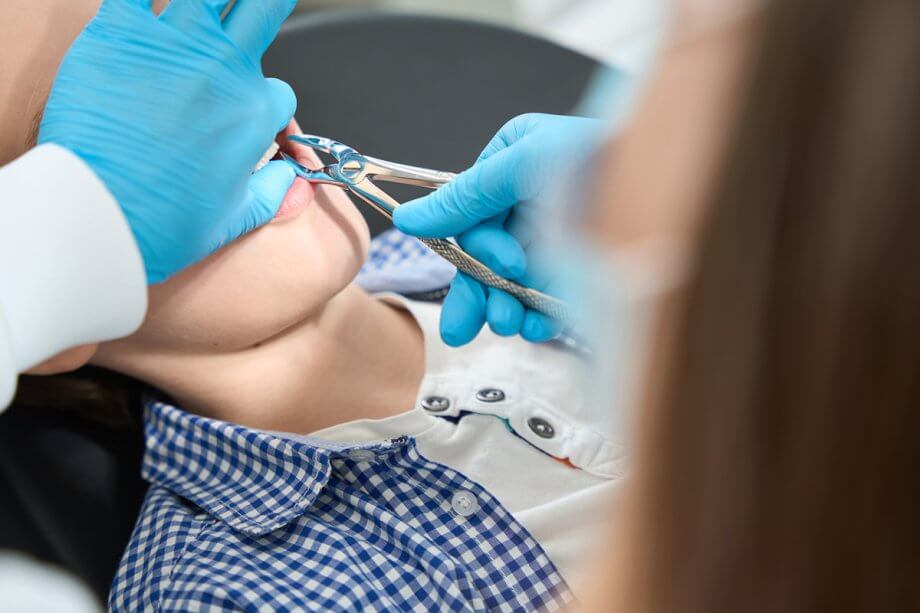Undergoing a tooth extraction marks the beginning of a healing journey. While the procedure occurs in our office, your recovery takes place at home. A primary concern for many patients is postoperative bleeding. Seeing blood after a dental procedure can be unsettling, but a certain amount of it is a productive and necessary part of your body’s healing mechanism. Understanding what to expect can transform anxiety into confidence as you recover.
This article provides a clear roadmap for your post-extraction experience. We will explore the characteristics of routine healing, identify the factors that can cause more significant bleeding, and equip you with practical, at-home strategies to manage it effectively. Knowing these details, including when professional help is warranted, empowers you to take control of your recovery and ensure the best possible outcome.
The First 48 Hours: Defining Normal Healing
Immediately after a tooth is extracted, your body initiates a complex healing process. The first step involves the formation of a blood clot within the empty socket. This clot is not a sign of a problem; it is the biological foundation for regeneration. It protects the underlying bone and nerves, serving as a scaffold for new tissue to grow.
For this reason, some minor oozing of blood, often mixed with saliva, is perfectly normal for the first 24 to 48 hours. You might notice a pinkish tint to your saliva or find small traces of blood on your gauze. This is a sign that the healing process is underway.
Factors That Influence Bleeding
Not all extractions are the same, and the amount of bleeding can vary based on the complexity of the procedure.
- Surgical Interventions: An impacted tooth that has broken off at the gumline or possesses long, curved roots may require a more surgical approach. This process can involve incisions in the gum tissue, which naturally leads to more bleeding than a simple extraction.
- Challenging Removals: Teeth that have undergone a root canal can become brittle, and severely decayed teeth may crumble during extraction. Removing these in sections is a more intricate process that can cause greater disruption to the surrounding tissues and result in increased bleeding.
- Anatomical Position: Teeth located in areas with a rich blood supply may also bleed more following removal.
Even in these cases, the bleeding should be controllable and gradually diminish over time. If you experience bleeding that seems profuse, cannot be controlled, or is accompanied by dizziness, it is vital to contact our office.
Uncovering the Sources of Prolonged Bleeding
When bleeding continues beyond a slow ooze or restarts after initially stopping, it is essential to understand the potential causes. These triggers range from underlying health conditions and medications to simple daily activities that inadvertently disrupt the healing site.
The Role of Systemic Health
Your overall health plays a direct part in your body’s capacity for clotting. Several medical conditions can alter the blood’s ability to coagulate, making a person more susceptible to bleeding after surgery.
- Clotting Factor Deficiencies: Inherited disorders like Hemophilia and von Willebrand’s disease directly impact the body's clotting cascade, a sequence of protein interactions that stops bleeding.
- Organ Function: The liver is responsible for producing many of the proteins required for coagulation. Consequently, significant liver dysfunction can lead to bleeding problems.
- Blood-Related Cancers: Certain cancers can affect the quantity and quality of platelets, which are cell fragments essential for forming a primary plug at a wound site.
Always provide a complete medical history to your dental team before any surgical procedure to ensure your safety.
The Impact of Medications and Supplements
A wide array of common prescriptions and over-the-counter products can thin the blood, prolonging bleeding after an extraction.
- Anticoagulant and Antiplatelet Drugs: Medications prescribed to prevent heart attack and stroke, such as Coumadin (Warfarin), Plavix, Xarelto, and Eliquis, are specifically designed to inhibit clotting. Even daily low-dose aspirin has a significant effect.
- Unexpected Prescription Effects: Other drug classes, including some antidepressants, antipsychotics, and corticosteroids, can have secondary effects that interfere with platelet function.
- Natural Does Not Mean Neutral: Many people assume herbal supplements are harmless, but several are known to have potent blood-thinning properties. These include garlic, ginger, ginkgo biloba, ginseng, dong quai, and feverfew. Disclosing all supplements is just as important as revealing prescription medications.
How Your Actions Affect Healing
The fragile blood clot that forms in the socket is easily dislodged, especially in the first few days.
- Negative Pressure: Using a straw, spitting forcefully, or even aggressive rinsing creates a vacuum effect in the mouth that can pull the clot right out of its socket, triggering fresh bleeding.
- Physical Strain: Any activity that raises your heart rate and blood pressure, like heavy lifting or intense exercise, can cause the extraction site to throb and bleed.
- Dietary Missteps: Consuming hard, crunchy, or sharp foods can mechanically scrape or dislodge the clot.
- Harmful Habits: Smoking constricts blood vessels, reducing the flow of oxygen and nutrients needed for healing. Alcohol can also interfere with the clotting process.
At-Home Techniques for Managing Bleeding
Should you find yourself dealing with more than a slight ooze, there are straightforward and effective measures you can take to stop the flow. The principle behind these methods is applying direct, uninterrupted pressure to the site.
Applying Direct Pressure with Gauze
This is the first line of defense against post-operative bleeding.
- Fashion a thick pad from a clean, sterile piece of gauze.
- Position the pad so it rests directly on top of the extraction socket, not just loosely in the area.
- Bite down firmly and continuously for a full 20 to 30 minutes. Refrain from changing the gauze or checking on the site during this time, as that will interrupt the pressure and disturb any clot that is beginning to form.
The Tannic Acid Trick
If pressure with gauze alone is not sufficient, a common household item can provide an extra boost.
- Take a standard black tea bag (not herbal) and dampen it slightly with water.
- You can wrap it in a thin layer of gauze to prevent tea leaves from getting into the socket.
- Place the tea bag over the site and bite down with the same firm, steady pressure for another 20-30 minutes. Black tea contains tannic acid, a natural compound that helps constrict blood vessels and encourages coagulation.
Addressing the "Jelly Clot" Phenomenon
Sometimes, particularly for patients taking anticoagulants, you may wake up to find a large, gelatinous, dark red mass over the extraction site. This is an unstable, poorly organized clot that is not effectively sealing the wound.
- This "jelly clot" needs to be removed. Gently wipe it away with a moist piece of gauze.
- Removing it will cause the site to bleed again. This bleeding is expected.
- Immediately start applying firm pressure with a new gauze pad or tea bag to promote the growth of a stable, healthy clot.
When Professional Care is Necessary
While these at-home measures are highly effective in most cases, there are situations where you need to return to the dental office for assistance. Uncontrolled bleeding that fills your mouth with blood or persists for more than a couple of days requires professional evaluation.
Our team has access to advanced materials and techniques to resolve persistent bleeding issues.
- Cleansing the Socket: The area is numbed, and we use gentle suction and sterile saline to remove any failed clots and debris from the socket completely. This creates a clean environment for proper healing to begin.
- Applying Hemostatic Agents: We can place specialized materials directly into the socket that are designed to stop bleeding. These might be collagen plugs or absorbable gelatin sponges that provide a matrix for a new clot to form upon.
- Using Sutures for Closure: Stitching the gum tissue over the extraction site is a very effective way to manage bleeding. The sutures help hold the tissue in place and apply pressure to the underlying blood vessels. We can also use tissue adhesives to create a protective seal over the area.
- Laser Therapy: A soft-tissue laser can perform cauterization. This process uses focused light energy to seal the ends of tiny blood vessels, effectively stopping the bleeding with high precision.
Your safe and speedy recovery is our ultimate goal. By following your post-operative instructions carefully and using these guidelines, you can navigate the healing process with confidence. Please do not hesitate to reach out to JM Dental of Westbury if you have any questions or concerns along the way.

